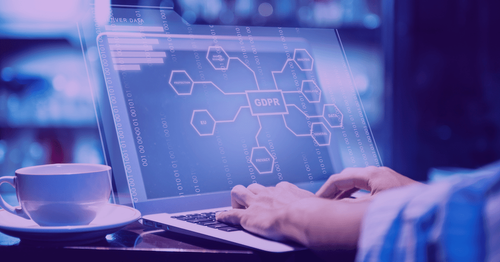A look into 2022: Privacy Enhancing Technology as a necessary trend for the year
After a year of massive cyberattacks, here's how PETs are officially one of the best techniques to keep your data safe.

Data security will undoubtedly remain a concern in the coming years. With workers heading back to the offices as companies resume "normal" operations after the pandemic, we will see the need for even more secure professional networks. Cybercrime has already affected major businesses all over the world, causing significant disruption and forcing enterprises to stop and pay up.
The ransoms have also been getting higher. And estimates show that cybercrime will cost companies worldwide some $10.5 trillion annually by 2025, up from $3 trillion in 2015, according to Cybersecurity Ventures. Moreover, this type of crime, evermore “professional” and effective, is growing at a pace of 15% YoY, the CV report added.
Companies have already realised the amount of work they need to do just to keep up with cybercriminals. An S&P research with IT professionals early this year showed that 18% of them said their organisation planned to increase its total information security budget by 50% to 200% in 2021 versus 2020.
Privacy Enhancing Technology Techniques
Among the biggest trends for data security and protection for the coming years is the use of Privacy Enhancing Technology Techniques (PET techniques). A Gartner report stated that by 2025, 60% of large organisations will adopt PET for processing data in untrusted environments and (multi-party) data analytics use cases.
It makes sense, as these technologies embody fundamental and necessary data protection principles. The goal is to protect personal data, especially as it is sent, received and being worked on, from the interference and access of third parties. The techniques can be applied to data, software and hardware.
When it comes to data, the PET techniques include differential privacy, synthetic data, and homomorphic encryption. When it comes to software, there is secure multiparty computation, zero-knowledge proofs, and FedML, for example. Finally, privacy protection techniques can also be applied to hardware. Examples of that are confidential or enclave computing and using trusted third parties.
As more information gets shared and sent back and forth to and from the cloud, privacy concerns become even greater. Cloud computing and data processing are integral parts of most, if not all, businesses, and the benefits such technologies bring cannot be forfeited anymore.
However, companies have a duty and a need to protect this information. The costs of data breaches are just too high, and not only when it comes to palpable expenses such as ransom payments. With data security becoming an ESG issue, vulnerable companies risk losing investors, clients and businesses.
Governments, funds, and consumers are demanding high levels of protection and compliance. And the implementation of PET techniques, including advanced cryptography to protect information, has become more than a trend. It is an absolute necessity.
Want to learn more about the sector and encrypted data? Don’t miss out on Vaultree content.
More from our blog
Vaultree: Bulletproof Your Business from GDPR Breach Disclosures and Fines
Transform compliance into a significant competitive advantage - business challenges now become opportunities for growth and innovation
How Data-In-Use Encryption Supports Organisations with GDPR Compliance
Data breaches are a major concern for organisations. From hacking to phishing and insider threats, the leak of sensitive data has severe consequences, not only in finances. We're talking about reputat
Cybersecurity in 2023: What can we expect?
It's a new year, but how will the infosec industry respond with cyberattacks on the rise?


